Book Reviews
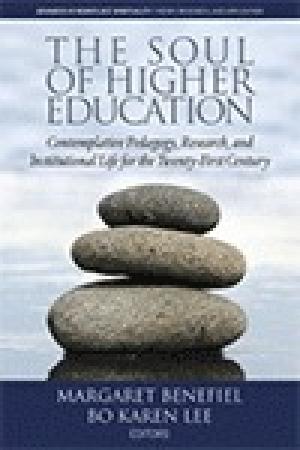
The Soul of Higher Education: Contemplative Pedagogy, Research and Institutional Life for the Twenty-first Century contributes to an understanding of the importance and implications of a contemplative grounding for higher education. It is the sixth in a series entitled Advances in Workplace Spirituality: Theory, Research and Application, which is intended to be an authoritative and comprehensive series in the field. This volume consists of chapters written by noted scholars from both Eastern and Western traditions that shed light on the following questions: • What is an appropriate epistemological grounding for contemplative higher education? How dues the current dominant epistemology in higher education mitigate against contemplative teaching, learning, and research? What alternatives can be offered? • How can a contemplative culture be nurtured in the classroom? What difference does that culture make in teaching and learning? What is the role of individual and institutional leadership in creating and sustaining this culture? • What is contemplative research? How can the emerging field of contemplative studies fit into the twenty-first-century university? • What can faculty and students learn from contemplative practices about how to find peace of mind in a world of higher education characterized by increasing complexity, financial pressures, and conflicts? • What does a contemplative organizational structure look like in higher education? How can committees, faculty meetings, and administrative teams use contemplative practices to work more effectively together? • How can contemplative decision-making processes be used in higher education? Given hierarchies, turf wars, and academics’ propensity for using argument as a weapon, is it possible to introduce contemplative practices into decision-making situations in appropriate ways? (From the Publisher)
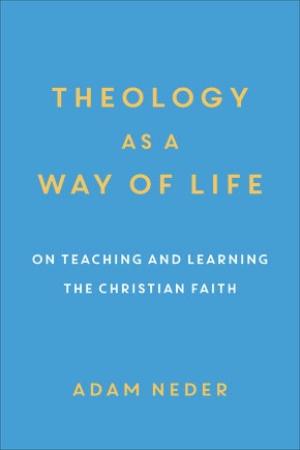
What difference does Jesus Christ make for the way we teach the Christian faith? If he is truly God and truly human, if he reveals God to us and us to ourselves, how might that shape our approach to teaching Christian theology? Without a compelling theological vision of theological instruction and without a clear awareness of its unique goals, challenges, and temptations, our teaching will be out of joint with the subject matter, and we will waste valuable opportunities. Drawing on the work of Søren Kierkegaard, Karl Barth, and Dietrich Bonhoeffer, Adam Neder offers a clear and creative theological and spiritual reflection on the art of teaching the Christian faith. This concise and engaging book offers a wealth of fresh insights and practical suggestions. While addressed to teachers in academic contexts, the approach is broad enough to include anyone involved in teaching and learning Christianity. (From the Publisher)
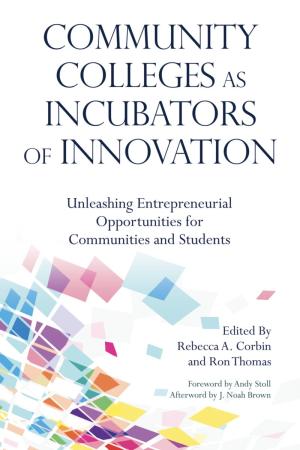
While community colleges have traditionally focused on providing students with opportunities to gain credentials for employment, the increasingly important question is: Are they preparing students for the looming dynamic, disruptive, and entrepreneurial environments ahead? This book addresses the urgent need for community colleges to prioritize entrepreneurship education both to remain relevant in a changing economy and to give graduate students the flexible and interdisciplinary mindsets needed for the future of society. It argues that entrepreneurial education should be offered broadly to a wide range of students, and across all disciplines; defines the key constructs for achieving this objective; and describes how to create entrepreneurial learning environments. The expert contributors, with the support of the National Association for Community College Entrepreneurship (NACCE), start from the premise that community colleges are uniquely positioned to lead entrepreneurial initiatives through both internally-generated curriculum design and through collaboration with the local entrepreneurial community to build bridges between the classroom to the community which in turn can offer models of implementation and constitute a network or support system for students. Community colleges can become incubators of innovation, a magnet for talent, and provide the impetus for development strategies that their communities have not begun to realize. As the chapters make clear, developing an entrepreneurial program itself requires an entrepreneurial mindset that transcends any lack of resources, requiring a spirit of imagination and resourcefulness. This book takes the reader on a journey through the steps needed to build a meaningful, relevant, and sustainable entrepreneurship program, covering program development, curriculum design, appropriate pedagogical approaches, and community engagement. (From the Publisher)
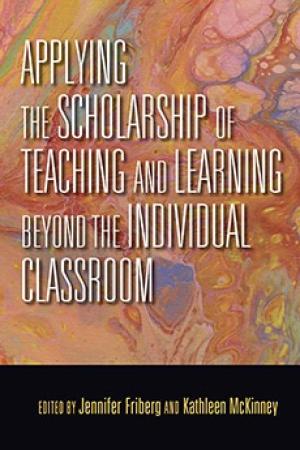
When the Scholarship of Teaching and Learning (SoTL) emerged, it often concentrated on individual faculty practice in one classroom; it is now, however, increasingly common to find work in SoTL focused more broadly. SoTL studies may engage with a cluster of courses, a program, a particular population of students, a pedagogical approach, or a field—all of which are represented in the essays collected here by authors from a diverse array of institutions and nations. This volume features examples of SoTL research conducted in, and applied to, a variety of contexts and disciplines, offering a theoretical framework for an expanded vision of SoTL—one that moves beyond the individual classroom. (From the Publisher)
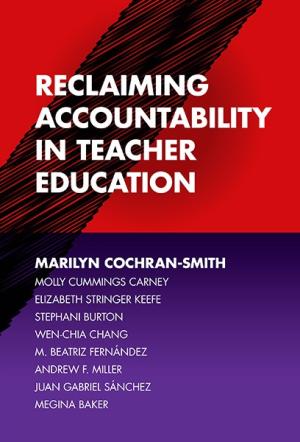
Teacher accountability has been a major strategy for “fixing” education for the last 2 decades. In this book, Cochran-Smith and her research team argue that it is time for teacher educators to reclaim accountability by adopting a new approach that features intelligent professional responsibility, challenges the structures and processes that reproduce inequity, and sustains multi-layered collaboration with diverse communities. The authors analyze and critique major accountability initiatives, including Department of Education regulations, CAEP accreditation procedures, NCTQ teacher preparation reviews, and edTPA, and expose the lack of evidence behind these policies, as well as the negative impact they are having on teacher education. However, the book does not conclude that accountability is the wrong direction for the next generation of teacher education. Instead, the authors offer a clear and achievable vision of accountability for teacher education based on a commitment to equity and democracy. (From the Publisher)
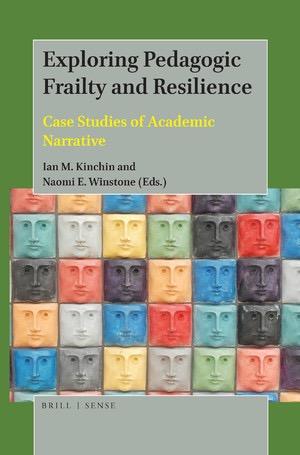
Exploring Pedagogic Frailty and Resilience presents the practical application of the frailty model to demonstrate how it may be used to support the professional development of university teachers. Case studies from colleagues representing a diverse variety of disciplines illustrate how the development of a reflective narrative can be initiated and framed through the use of concept map-mediated interviews. The emerging accounts share a common structure to facilitate comparison across academic disciplines. Chapters are written by academic leaders – colleagues who are recognised as excellent teachers within their disciplines and whose voices will be acknowledged as offering authentic commentary on the current state of university teaching. These commentaries offer a unique resource for other academics who may be tempted to reflect on their teaching in a scholarly manner, or to university managers and academic developers who want to explore the detail that lies beneath broad surveys of teaching quality and investigate the factors that can either support the development of teaching or impede its progress. This collection of narratives drawn from a single institution will resonate with the experiences of teachers in higher education more broadly through areas of common interest and regions of generalisability that can be explored to inform professional development of university teachers in other institutional and national contexts. (From the Publisher)
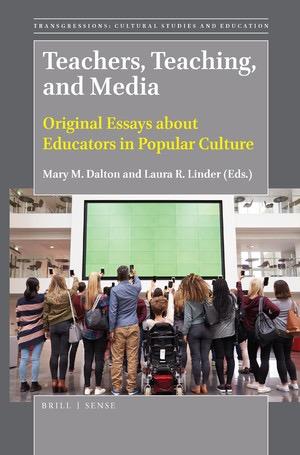
Popular representations of teachers and teaching are easy to take for granted precisely because they are so accessible and pervasive. Our lives are intertextual in the way lived experiences overlap with the stories of others presented to us through mass media. It is this set of connected narratives that we bring into classrooms and into discussions of educational policy. In this day and time—with public education under siege by forces eager to deprofessionalize teaching and transfer public funds to benefit private enterprises—we ignore the dominant discourse about education and the patterns of representation that typify educator characters at our peril. This edited volume offers a fresh take on educator characters in popular culture and also includes important essays about media texts that have not been addressed adequately in the literature previously. The 15 chapters cover diverse forms from literary classics to iconic teacher movies to popular television to rock ‘n’ roll. Topics explored include pedagogy through the lenses of gender, sexuality, race, disability, politics, narrative archetypes, curriculum, teaching strategies, and liberatory praxis. The various perspectives represented in this volume come from scholars and practitioners of education at all levels of schooling. This book is especially timely in an era when public education in the United States is under assault from conservative political forces and undervalued by the general public. (From the Publisher)
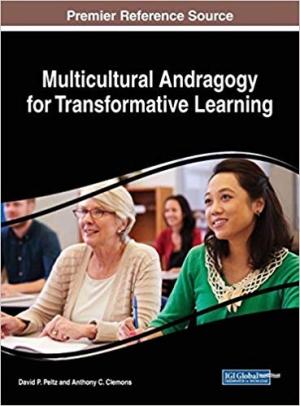
In the Foreword and the Introduction of Multicultural Andragogy for Transformative Learning, the editors lay out the goals and the structure of this multi-author volume. But the reader will not get past the first paragraph of the Forward before encountering one of many punctuation errors that plague the volume. In addition to multiple punctuation errors, some chapters contain so many spelling and phrasing errors that the reader is distracted from engaging with the content. Further, the quality of the research, the quality of the writing, and the author’s ability to support his/her assertions varies widely from chapter to chapter. The result is a collection of chapters that are very loosely connected, with little consistency in how each author engages with the intersection of multiculturalism, andragogy, and transformative learning. The volume is organized into three sections. The first provides the reader with the foundations for understanding the learning theories of andragogy and transformative learning and how both relate to culture. The second section examines andragogy and practice in a variety of cultural contexts. The final section describes “transformative multicultural andragogy” (xvii) in practice. While some chapters stand out as cogent and applicable, too many other chapters suffer from lack of editorial attention and guidance. The first section of the volume would most benefit from said guidance. Each chapter explains the theory of andragogy; many also describe transformative learning. Andragogy is also explained in detail in the Preface, making much (and in one case, most) of these initial chapters repetitive. Rather than re-explaining these theories, these chapters would be better spent connecting adult learning in various contexts to multiculturalism. Some of the chapters in sections two and three are valuable as stand-alone articles on their stated topics, but as a whole the chapters do not work together to enlighten the reader about multicultural andragogy as it relates to transformative learning. To be fair, the editors state that they “have set a broad scope for the theme” of exploring the intersection of culture, andragogy, and transformative learning (xx). However, only a few of the authors explore all three of these concepts. When a chapter in a volume is notable for addressing the stated topic of the volume, the scope of the volume is perhaps too broad. In the Preface and Conclusion, the authors state that “the primary focus of this text has been to elicit the connection between cultural perspectives and adult learning” (xxiv, 270), and in the Conclusion, they propose a new learning model representing the relationship between andragogy, transformation learning, and multiculturalism. What one would hope to learn from this volume is how they interact, not just that they do, so that the model can be tested and reproduced in an adult learning environment. The editors are correct that the relationships between these concepts should be explored and described, and that adult education would benefit from such work. However, Multicultural Andragogy for Transformative Learning lacks the focus and editorial oversight to accomplish that goal.
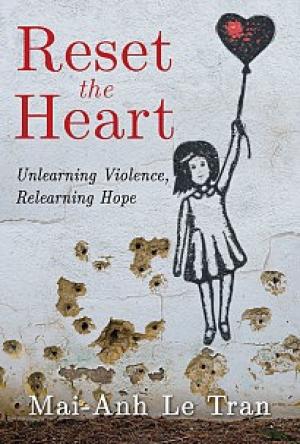
Mai-Anh Le Tran, an associate professor of religious education and practical theology at Garrett-Evangelical Theological Seminary, tackles a profound question in her book Reset the Heart: Unlearning Violence, Relearning Hope when she asks, “what does it mean to educate for faith in a world marked by violence?” Tran, who is a past president of the Religious Education Association, is an ordained elder of the United Methodist Church. This intriguing volume about the problem of faith in a violent world begins in August 2014 with the deaths of Eric Garner in New York City and Michael Brown in Ferguson, Missouri. Situated within this violence and racism, Tran allows three questions to guide her search for meaning and answers: “What does it mean to educate for faith in a world marked by violence? How are Christian faith communities complicit in the teaching and learning of violence? What new (or renewed) practices of faith and educational leadership can help us unlearn violence and relearn hope?” (10). The search for these answers provides her agenda for “resetting the heart” (10). Tran’s first two chapters struggle with her first question as she draws upon frameworks from social psychology, cultural studies, postcolonial theory, and racial formation theory. In Chapter Three, she examines the church’s complicity in the teaching and learning of violence. She offers a reframing of Charles Foster’s five major critiques of the church’s “catechetical culture” as a foundation of her answer. Finally, she attempts to answer her third question in Chapters Four, Five, and Six as she models relearning hope. Throughout this volume, Tran explores a number of subjects that interrelate with her subject including race as political theology, racism as a form of violence, religious education malpractice, and the erasure of historical memory. Her model for relearning hope includes practicing communicability, redeemability, and educability. She reminds her readers again and again of the vital importance of religious education and the role of the religious educator in fostering transformation. As she writes in her conclusion, “Let the people of God say ‘Amen.’ And let Christian religious educators remind the people what ‘Amen’ means” (164). Tran makes excellent use of a powerful theological writing technique rooted in what theologian Heather Walton describes as “performance autoethnography.” Her use of this technique makes the book’s content come alive in a faithful and academically solid narrative; Tran shows readers theology instead of just telling them. This is particularly true in her opening chapter as well as in Chapters Four, Five, and Six, when she integrates the support of 14 other theological voices that she engages as “theological reflectors.” This complex and stimulating writing does make the writing style in Chapters Two and Three, where Tran establishes her argument within the wider academic narrative, seem flat and uninspiring. Nevertheless, this is a very well-written narrative that is a pleasure to read. Tran provides readers with a valuable and insightful addition to the theological understanding of religious education. This volume should be added to all theological libraries and is a must read not only for academics who specialize in religious education but also for clergy and leaders in parish religious education.
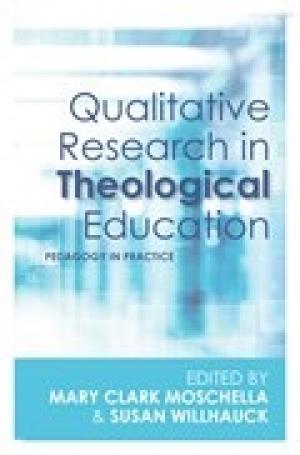
If you are looking for a current collection of essays about the state of qualitative research in theological education, then this volume edited by Moschella and Willhauck will be extraordinarily useful. The contributors offer a broad-based, international approach to their topic, complete with case studies and a select bibliography. Together, they argue that qualitative research is essential to the formation of ministers and theological scholars. Moschella’s introduction provides a concise overview of how this collaborative project began, key themes in the field of ethnographic studies, and how each of the essays addresses these issues. There is real value here for the reader who is just plunging into the study of qualitative research and needs an overview of how the discipline is developing. This is a handbook in four parts, with fifteen chapters. As such, it is designed for both reading and reference. In addition to the introduction, most readers will benefit from the first two entries that comprise Part One, “Exemplary Research Essays.” Whitmore’s essay, “Theology as Playbook and Gamefilm: Explaining an Ethnographic Approach to Theology to a Sports-Centred Culture,” uses sports analogies to underscore the vital connection between theology and practice. This is one of several essays that emphasize the theological nature of ethnographic research. For theological educators, this is an important contention which broadens the discussion beyond contrasting qualitative versus quantitative methods and goals. Just how inclusive that discussion can become is indicated by Sorajjakool and Prachyapruit in “Qualitative Methodology and Pedagogy: A Study of the Lived Experiences of Thai Peasants within the Context of Western Development Ideology.” Part Two, “Issues in Education and the Practice of Research,” includes ten chapters that emphasize the embodied and contextual nature of qualitative research. They are also a reminder that the interdisciplinary nature of this work is a necessary and fitting response to the complexity and messiness of real life. While there are several strong essays in this group, particular note should be taken of “Promoting the Good: Ethical and Methodological Considerations in Practical Theological Research” by Graham and Llewellyn, along with “Just Don’t Call It ‘Ethnography’: A Critical Ethnographic Pedagogy for Transformative Theological Education” by Wigg-Stevenson. Part Three, “Integrating Qualitative Research into Theological Education”, includes Mellott’s “Qualitative Research in Theological Curricula” and Clarke’s “Wonder and the Diving Dance: The Lived Reality of Qualitative Research within a Master of Divinity Curriculum.” Both essays are valuable for theological educators and will repay rereading. The concluding section, Part Four, “Valediction,” is a single essay by Willhauck, “The Gift and Challenge of Qualitative Methods for Pastoral Formation.” Four major themes for teaching qualitative research are identified and briefly discussed including: contextualization, communication, reflection/reflexivity, and vocation (264). Willhauck’s elaboration on these themes makes a fitting conclusion to this extraordinarily rich and suggestive resource.